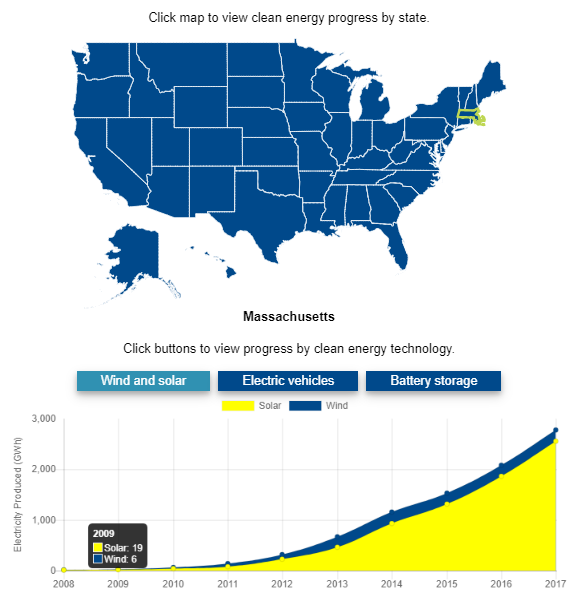Gideon Weissman
Former Policy Analyst, Frontier Group
A dramatic change that was just beginning a decade ago is still picking up steam. It’s a change that is making the world cleaner, safer, and healthier. And it is a change to one of the most critical systems underlying modern life – our energy system.
Former Policy Analyst, Frontier Group
A lot of changes can happen in ten years. In 2008, people were camping overnight for new iPhones, superhero blockbusters were in the early stages of their cinema takeover, and hoppy microbrews were the hip new beers. In 2018, it’s tough to get as excited about the newest touchscreen, Spiderman movie, or IPA. But one dramatic change that was just beginning a decade ago is still picking up steam. It’s a change that is making the world cleaner, safer, and healthier. And it is a change to one of the most critical systems underlying modern life – our energy system.
I’m talking about the dramatic rise of clean energy. It is a change that, after a century of increasing reliance on extracting and burning fossil fuels, is allowing us to get more of our energy from renewable sources like the sun and wind, without extracting and burning fossil fuels. And this week, we charted this shift with the release of Renewables on the Rise 2018, a report that documents the spread of clean energy technologies across the United States over the last decade.
We found that the rise of clean energy has been rapid and has taken place in every corner of the country. In 2017, America produced five times as much wind power, and 39 times as much solar power, as in 2008 – enough to power 31 million homes. Thanks in part to the introduction of new energy efficiency technologies like LED lighting and intelligent heating and cooling systems, America’s total energy use dropped, even as the population grew by 20 million. Between 2008 and 2017, nearly 400,000 all-electric vehicles were sold, passing 100,000 annual sales for the first time in 2017. And America’s large-scale battery storage capacity grew 17-fold from 2008 to 2017, with the vast majority of that growth in just the past three years.
These findings are easy to explore in an interactive map we created for the report release. This tool allows you to select a state and a clean energy technology to see the rise of clean energy around the country, and to see how each state compares. Here in Massachusetts, for example, I can see that solar energy has grown 247-fold since 2008, and that wind and solar now generate enough energy to power 258,000 homes.

Together, these technologies will form the core of a clean energy system of the future. Wind and solar produce clean, emission-free electricity. Efficiency technologies reduce overall energy use, limiting the need for new energy infrastructure. Electric vehicles allow the use of clean energy for what has become the nation’s leading source of carbon emission: transportation. And energy storage allows us to use clean energy with more flexibility and less variability.
Yet while the rise of clean energy technology has been dramatic, it has also been, in a way, quiet. Sure, there are new solar panels on more than a million roofs, and tens of thousands of new wind turbines are spinning in fields and on hilltops. But the impact on daily life has been subtle. Lights (albeit efficient ones) turn on like they always did. By most accounts renewable energy has led to – and will lead to – more stability and resilience in the electric grid.
The consequences of not moving to clean energy, however, will be anything but subtle. Rapidly reducing our reliance on fossil fuels is the most important thing we can do to reduce carbon emissions – and to limit the worst impacts of global warming. Fortunately, our analysis shows that a clean energy future is within reach. If wind and solar generation grow by just 14 percent per year – or about two thirds of the past decade’s growth rate – they would produce enough electricity to meet all of our current electricity needs by 2035.
The last decade has brought an exciting shift to our energy system at just the right time, and clearly demonstrated the promise of clean energy. Fulfilling that promise, however, will take lots of work in the decades ahead.
Image: Solar panels in Minneapolis, Minnesota. Credit: U.S. Department of Energy
Former Policy Analyst, Frontier Group
